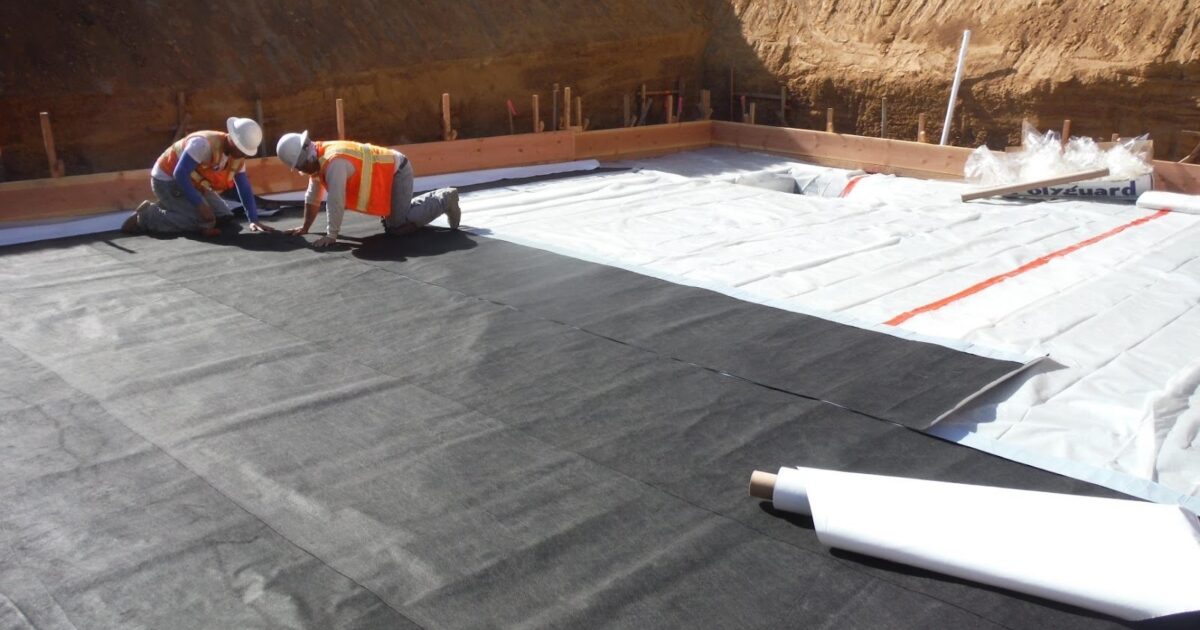The Role of Sump pump discharge drainage Omaha in Preventing Floods
Kinds of Waterproofing: Checking Out the Numerous Approaches and Their Applications
Waterproofing is a crucial facet of building and construction and maintenance. It protects frameworks from the harmful effects of water damage. There are several approaches available, each with its one-of-a-kind applications and advantages. From membrane layer systems to cementitious options, comprehending these choices is necessary for reliable execution. The selection of waterproofing technique can significantly impact longevity and long life. Exploring these various techniques discloses their distinctive benefits and potential challenges, triggering further factor to consider of optimal remedies.
Membrane Layer Waterproofing Solutions
Membrane layer waterproofing systems offer as an important obstacle versus water intrusion in different structures. These systems commonly include slim sheets made from materials like rubber, thermoplastic, or asphalt, which are related to surface areas to protect against moisture penetration. They can be installed over or below grade and are particularly reliable in locations susceptible to high water exposure, such as basements, roofs, and foundations.The installation process entails cleaning up the substratum, applying adhesives or guides, and exactly fitting the membrane layer to guarantee full coverage. Membrane systems can be either totally stuck, mechanically affixed, or laid loose, depending on the certain needs of the project. They supply resilience and versatility, fitting structural motions without compromising their waterproofing capacities. Additionally, these systems can be reinforced with extra layers for enhanced protection. Inevitably, membrane waterproofing systems are crucial for guarding structures versus water damage and keeping long-lasting integrity.
Liquid-Applied Waterproofing Coatings
Liquid-applied waterproofing finishings provide a flexible service for securing surfaces from water seepage - Landscape drainage Omaha. These layers contain liquid materials that, when applied, create a smooth, versatile membrane. Their adaptability permits application on various substrates, including concrete, steel, and wood. The layers can be used in diverse atmospheres, from household to industrial settings, making them appropriate for roofs, foundations, and below-grade structures.One substantial benefit of liquid-applied coverings is their capacity to satisfy irregular shapes and pass through splits, creating a durable obstacle versus dampness. They often exhibit excellent adhesion residential properties and resistance to UV radiation, making certain longevity and sturdiness. In addition, the application process is normally straightforward, permitting quick setup and decreased labor prices. This approach additionally reduces the threat of water merging, as the continual layer properly guides water away from susceptible areas. Generally, liquid-applied waterproofing coverings are an efficient selection for complete water protection
Cementitious Waterproofing Solutions

Cementitious waterproofing remedies offer a robust alternative for frameworks requiring reputable moisture security. These systems mostly use a mix of concrete, sand, and chemical additives to develop a water resistant obstacle. They are often related to surfaces such as concrete wall surfaces, structures, and floors, supplying a long lasting, durable defense versus water intrusion.One of the essential benefits of cementitious waterproofing is its simplicity of application; it can be used making use of a brush, roller, or spray, making it appropriate for numerous project dimensions. Furthermore, this approach is suitable with lots of surfaces and can typically be utilized combined with various other waterproofing techniques.Cementitious remedies are particularly reliable in settings where water direct exposure is a problem, such as basements or below-grade structures. Their exceptional adhesion properties ensure that they bond well with substratums, supplying a strong and nonporous layer versus moisture penetration.
Bentonite Waterproofing
Bentonite waterproofing is a highly reliable method that utilizes sodium bentonite clay to develop a natural obstacle versus water. This technique manipulates the special properties of bentonite, which increases upon call with water, sealing any prospective leakages and avoiding wetness seepage. It is generally utilized in different applications, including structure wall surfaces, passages, and keeping wall surfaces, where water resistance is essential.Bentonite can be used in a number of forms, such as panels or blankets, giving adaptability in setup. Its ability to self-seal makes it an attractive option for locations subject to changing soil or ever-changing water levels. In addition, bentonite waterproofing is eco-friendly, as it is a natural material that does not introduce damaging chemicals into the environments.
Water Drainage and Outside Waterproofing Solutions
Reliable waterproofing typically entails a mix of methods, including water drainage and exterior systems. Water drainage systems, such as try this out French drains and sump pumps, are made to reroute water far from structures, reducing hydrostatic stress against foundations. These systems are vital in protecting against water accumulation that can bring about structural damage and mold growth.External waterproofing, on the various other hand, involves using safety obstacles to the building's outside. Methods such as the installment of water-proof membrane layers, coatings, or sealants can aid protect against water seepage. This method not only protects the structure but additionally improves the total sturdiness of the structure.Together, drain and exterior waterproofing systems create a complete option to handle water efficiently. By carrying out these strategies, home proprietors can protect their investments against the damaging results of moisture, making certain long-lasting stability and safety for their buildings.
Frequently Asked Inquiries
How Do I Pick the Right Waterproofing Method for My Job?
Picking the appropriate waterproofing technique relies on aspects such as project type, environmental problems, budget plan, and preferred durability. Assessing these elements enables for educated decisions tailored to specific needs and requirements.

Can Waterproofing Be Applied in Winter Issues?
Waterproofing can be applied in cold weather condition problems, however it requires specific materials and strategies. Cold temperature levels might affect treating times and attachment, necessitating careful choice of items developed for low-temperature application.
What Are the Common Signs of Waterproofing Failing?
Typical signs of waterproofing failing consist of visible water stains, peeling paint, damp smells, mold development, and cracks in wall surfaces Visit Website or structures. Basement waterproofing Omaha. These indications recommend that dampness is permeating the barrier, compromising its effectiveness
Just How Long Does Waterproofing Last Before Requiring Upkeep?
The durability of waterproofing varies, generally lasting in between 5 to ten years. Aspects such as material top quality, ecological conditions, and upkeep techniques here are the findings influence its durability, demanding periodic assessments to assure reliable security versus water intrusion.
Exist Eco-Friendly Waterproofing Options Available?
The question of environment-friendly waterproofing options reveals an expanding passion in sustainable materials (Basement waterproofing Omaha). Various natural compounds, such as plant-based sealants and recycled items, offer efficient solutions while minimizing ecological effect, interesting ecologically conscious customers